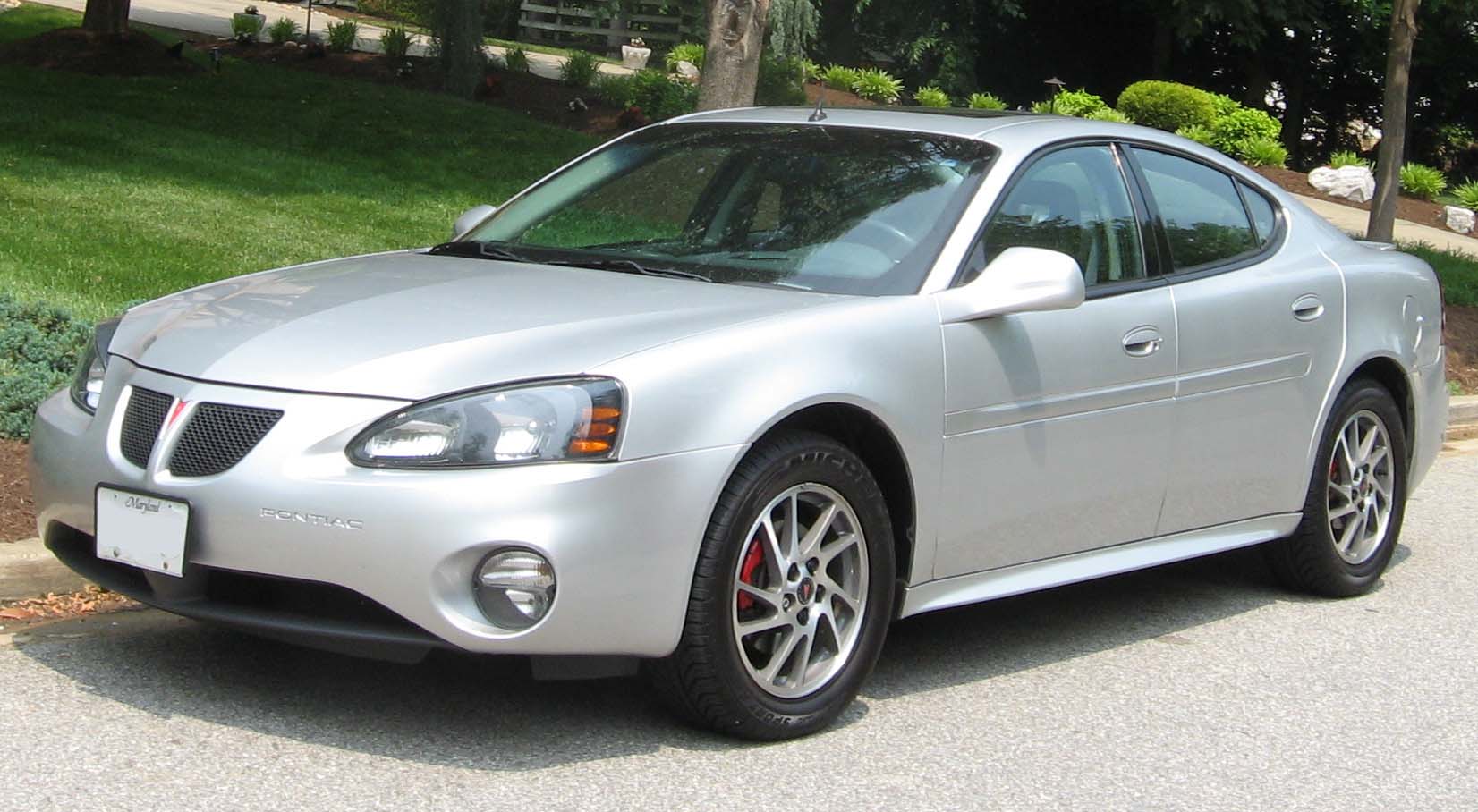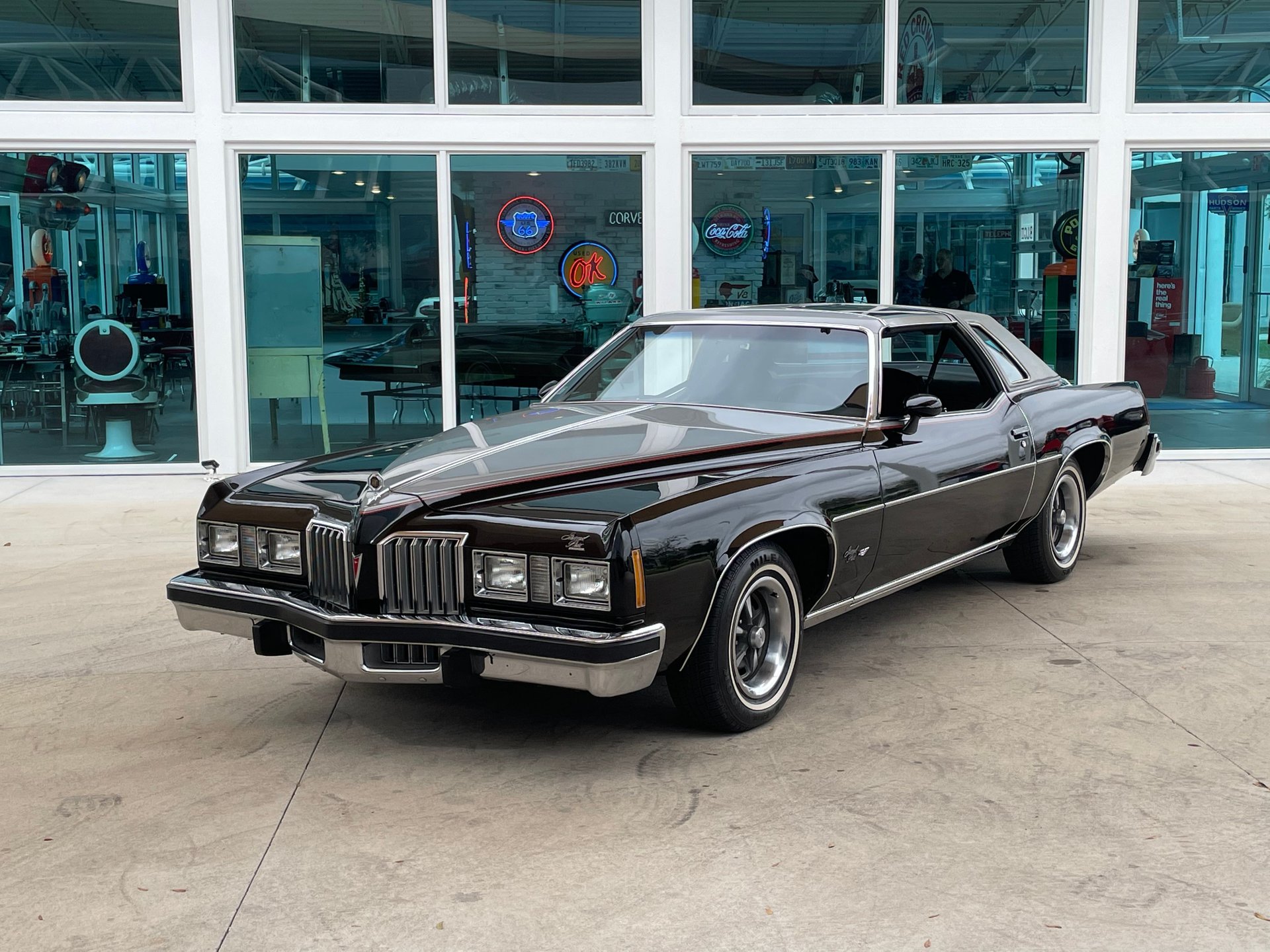Exploring The Pontiac Grand Prix: A Look At Its Legacy And What Makes It Special Today
Have you ever felt that pull, that sense of history, when you see a classic car drive by? For many, the Pontiac Grand Prix is that kind of vehicle, a true American icon that has, you know, really captured hearts for decades. It’s not just a car; it’s a piece of driving heritage, often bringing back fond memories for those who grew up with one or dreamed of owning one.
This particular model, the Pontiac Grand Prix, holds a special spot in automotive stories, offering a blend of style, comfort, and, at times, some serious muscle. It’s a car that, in a way, adapted through the years, from a personal luxury cruiser to a more performance-focused machine, then later a practical family sedan. Its journey tells a lot about changing tastes and what drivers really looked for in their vehicles.
So, whether you’re a long-time admirer, thinking about picking one up, or just curious about what makes this car tick, this piece is for you. We’re going to talk about the Pontiac Grand Prix, its interesting past, what makes it stand out, and how folks still keep these beauties on the road today. It’s a really cool story, actually.
- Utah Ivana Meandzija Missing Or Found Case
- Kari Karte Has Been Sammy Hagar S
- Dekenta Parchman Michigan Man 30 Who Tortured
- Thomas Flohr Net Worth How Rich Is
- Virginia Madsen And Her Partner Had An
Table of Contents
- The Grand Prix Story: A Look Back
- What Makes a Grand Prix Tick?
- Keeping Your Grand Prix Running Smoothly
- Connecting with Fellow Enthusiasts
- Frequently Asked Questions About the Pontiac Grand Prix
- A Lasting Impression
The Grand Prix Story: A Look Back
The Pontiac Grand Prix has quite a tale to tell, stretching over many decades and through several distinct looks. It started out as one thing and then, you know, it became something else entirely over time. It’s a bit like watching a person grow and change through different stages of their life.
Early Days: Luxury and Style
When the Pontiac Grand Prix first appeared in 1962, it was, in a way, Pontiac’s answer to a growing demand for personal luxury cars. It wasn’t just about getting from here to there; it was about doing it with a certain flair. These early models had a rather sleek look, often with bucket seats and a console, giving drivers a feeling of, you know, being in something special. It was a stylish ride for folks who wanted a bit more than just basic transportation, offering a sense of class and comfort.
The Muscle Years: Power and Presence
Then came the late 1960s and early 1970s, a time when cars really started flexing their muscles, and the Grand Prix was no exception. This period saw the car grow in size and, you know, in its reputation for performance. With powerful engines under the hood, these Grand Prix models became known for their ability to move with some serious speed. They were big, bold, and, you know, definitely made a statement on the road, embodying that classic American muscle car feel, at least for a while.
- What Is Mike Johnson S Net Worth
- Who Are Pharrell Williams Parents Meet Pharoah
- Bishop Briggs Husband Did Not Propose Her
- Where Is Ross Caruso Going After Leaving
- Who Is Corinna Kopf Biography Net Worth
Later Chapters: Evolution and Adaptation
As the years went on, the Pontiac Grand Prix, you know, kept changing. It downsized in the late 1970s, becoming a bit more efficient, which was important at the time. Then, in the 1980s and beyond, it shifted again, sometimes offering front-wheel drive and becoming more of a practical, yet still sporty, family car. These later versions, like the ones from the 1990s and 2000s, aimed to offer a good mix of comfort, everyday usability, and, you know, still a hint of that Pontiac spirit that people liked. It truly adapted to the times, more or less, right up until the brand itself faded away.
What Makes a Grand Prix Tick?
Getting to know a Pontiac Grand Prix means looking at what’s under its skin, from its engines to the little details that tell its story. It's really quite fascinating, you know, how much information these cars hold.
Engines and Performance
Over its long run, the Pontiac Grand Prix used a wide variety of engines, from V6s that were, you know, pretty good on gas to big, rumbling V8s. For those looking to get more out of their Pontiac engine, whether it’s a Grand Prix or something else, exhaust improvements can make a noticeable difference. All Pontiac engines, you know, actually get a real boost from better exhaust parts, like those classic RA exhaust pipes or headers. Specific engine setups, such as the 744 and 041, often really need exhaust systems that let the engine breathe better, which is, you know, pretty important for performance. Sometimes, you might also find that a higher stall converter is a good idea for certain setups, especially if you’re building a new motor and want to get the most out of it.
Identifying Your Car's Story
When you're looking at a Grand Prix, or any older Pontiac, there are little clues that tell you a lot about its past. For instance, a data tag sitting right there on the firewall is a real treasure trove. These tags, you know, they pretty much lay out the features and choices the car had when it was new. They primarily identify equipment or options installed, giving you a clear picture of how the car was originally put together. The third line on that tag, it typically shows the accessories (acc) that came with the car, like air conditioning or power windows. It’s like finding a little secret code that tells you all about your car’s original setup, which is, you know, really neat for restorers or just curious owners.
Keeping Your Grand Prix Running Smoothly
Owning a classic or even a newer Pontiac Grand Prix means giving it some attention to keep it in good shape. It’s like any relationship, you know, a little care goes a long way. This involves regular check-ups and knowing how to handle some of the common tweaks.
Maintenance Tips for Longevity
Keeping a Grand Prix on the road for years to come means sticking to a good maintenance routine. Luckily, Pontiac, bless their hearts, even put pictures and words in their service books, which are a huge help. These manuals are incredibly useful for everything from routine fluid changes to more involved tasks. For example, setting the distributor? Well, you don't even need the engine sitting in the car, as the service guide spells it out, which is, you know, a pretty handy tip. The best spot to kick off the adjustment process is with the first cylinder, number one, which is a common starting point for engine tuning. Having the service manual handy makes these jobs a lot less daunting, honestly.
Upgrades and Modifications
Many Grand Prix owners, you know, enjoy making their cars even better, whether it’s for performance or just a fresh look. If you're putting together a fresh engine, thinking about those exhaust upgrades we talked about earlier is a smart move. For those tackling electrical projects, say adding new components or fixing old wiring, specific wiring guides can be incredibly helpful. You can often find detailed wiring diagrams for various models and years, perhaps from aftermarket parts suppliers like Jegs, and you can even find them online, you know, on auction sites or through dedicated forums. These resources can really help you understand how everything connects and ensure your modifications are done right, which is, you know, pretty important for safety and function.
Connecting with Fellow Enthusiasts
One of the best parts about owning a Pontiac Grand Prix, or any classic car, is the community that comes with it. There's a whole online hangout, for example, for folks who love their Pontiacs, including Grand Prix owners. These forum communities are dedicated to Pontiac owners and fans, providing a place where people can, you know, really connect. You can chat about how they run, what changes people make, fixing little problems, keeping them in shape, their past, and so much more! It's a fantastic spot to get advice, share your own experiences, or just enjoy talking about these cool cars with others who get it. You might find some useful discussions on Pontiac GTO Forum, which, you know, often covers general Pontiac topics too.
Frequently Asked Questions About the Pontiac Grand Prix
What years did Pontiac make the Grand Prix?
Pontiac, you know, actually produced the Grand Prix for quite a long stretch, from 1962 all the way through 2008. That's a pretty long run for any car model, showing its enduring popularity and adaptability over the decades, you know, through many different automotive eras.
Is the Pontiac Grand Prix a good car for daily driving?
For many years, especially in its later generations, the Pontiac Grand Prix was, you know, designed to be a solid daily driver. It offered a comfortable ride, decent space, and generally reliable performance for its time. Older models might need more care, but newer ones can still serve well for everyday use, assuming they’ve been, you know, well-maintained.
Where can I find parts for my older Pontiac Grand Prix?
Finding parts for an older Pontiac Grand Prix can be a bit of a treasure hunt, but it’s totally doable. You know, you can check out online auction sites, specialized aftermarket parts dealers, and, importantly, those online forum communities. Often, other owners will know exactly where to source specific components, which is, you know, incredibly helpful. You might also find some helpful guides on our site, like Learn more about Pontiac Grand Prix parts on our site, or even explore specific model details on this page here.
A Lasting Impression
The Pontiac Grand Prix, you know, really leaves a lasting mark in the story of American cars. From its beginnings as a stylish luxury cruiser to its later roles as a performance machine and a dependable family sedan, it truly reflects the changing needs and desires of drivers. It’s a testament to a brand that, in a way, tried to offer something special for everyone.
Whether you’re drawn to the classic lines of an early model, the raw power of a muscle-era beast, or the practical appeal of a later generation, the Grand Prix offers a rich experience. It’s a car that, you know, continues to spark conversations and bring people together, especially within dedicated communities of enthusiasts. So, if you’re thinking about joining the ranks of Grand Prix owners, or just want to learn more, there’s a whole world of information and friendly faces waiting to connect with you. It's a pretty cool journey, really.
- Who Is Rogel Lazaro Aguilera Mederos Wife
- Tom Sandoval Parents Meet Anthony Sandoval And
- Denise Nicholas Age Bio Wiki Height Net
- Butch Patrick Net Worth Celebrity Net Worth
- What Happened To Mike Zobel Wife And

PONTIAC GRAND PRIX - Review and photos

1977 Pontiac Grand Prix | American Muscle CarZ

This RWD-Swapped 1999 Pontiac Grand Prix Is a DIY GTO With a Five-Speed